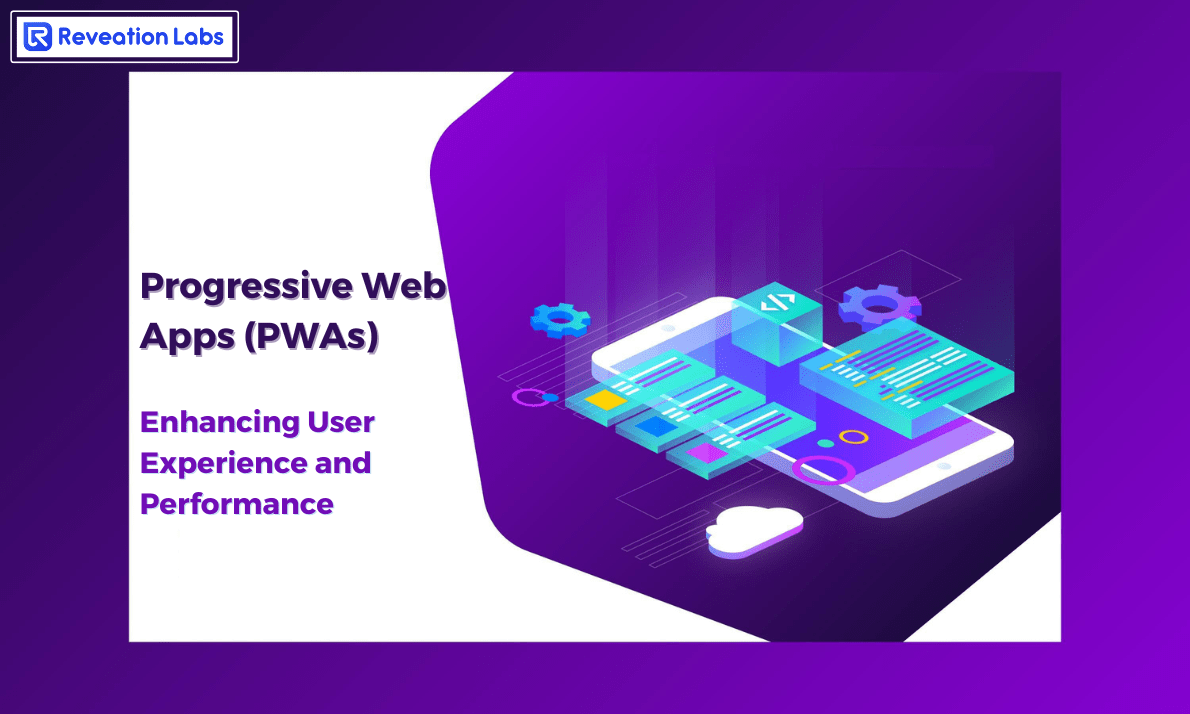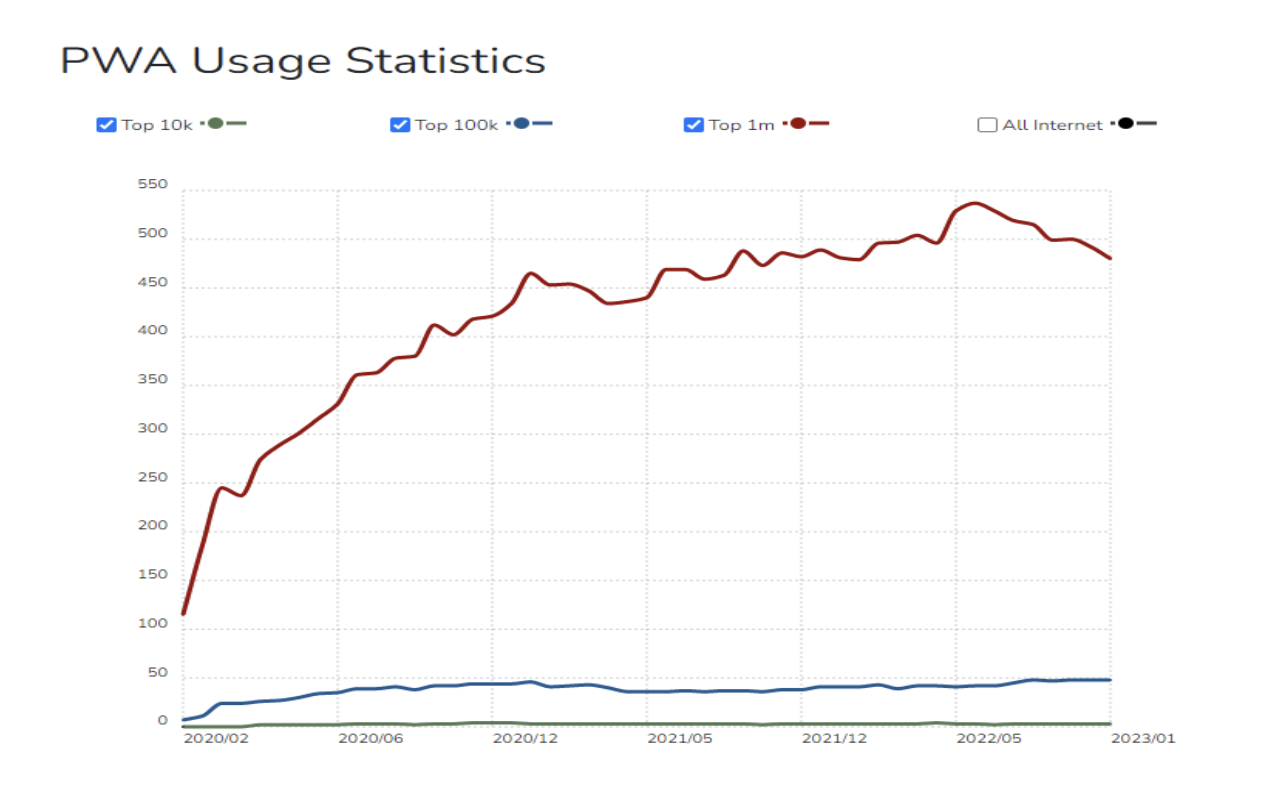Progressive Web Apps: Enhancing User Experience and Performance

Introduction
Did you know that according to BuiltWith, over 22,000 customers' websites have embraced Progressive Web Apps (PWA) as of January 2023? And here's the exciting part: businesses that make the switch to PWAs frequently experience a substantial boost in engagement, with reports from Smashing Ideas indicating increases ranging from a minimum of 20% to an incredible 250%! Now, you might be wondering, what exactly contributed to the immense popularity of PWA usage?
In this era of technological advancements, one innovation that has gained immense popularity is the Progressive Web Application (PWA). This remarkable creation serves as a hybrid between a website and a mobile app, functioning seamlessly on any device. Developed using HTML, CSS, and JavaScript, PWAs offer the captivating appearance and functionality of a native app. What sets them apart is their clever utilization of modern web technologies, enabling features like offline functionality, push notifications, and even access to device capabilities such as cameras and GPS. In this article, we'll explore the benefits of PWAs and delve into the reasons why businesses had to choose it.
Features of PWA
Also read: how to do SEO for PWAs
Developers utilize PWA frameworks to simplify the development process and optimize the functionality of PWAs. The choice of framework, such as Angular PWA, React PWA, Ionic PWA, or others, depends on the specific needs and preferences of the company.
Suggested : how to choose PWA framework
Requirements to convert a website into a Progressive Web App (PWA)
Progressive Web App Development Services enable companies to transform their apps into PWAs. While some businesses have embraced this trend, many newcomers remain uncertain about whether to opt for it. To address this, here is a list of PWA benefits specifically tailored for businesses.
Benefits of using PWA for businesses
- High user installation: Statistics show that PWAs have higher installation rates than traditional app downloads, with some studies reporting up to a 50% increase in user installation. Moreover, it offers a significant advantage to marketers by eliminating the reliance on Apple and Google. These platforms often introduce delays or uncertainties in publishing or updating apps on their respective app stores, causing frustration for businesses.
- Lower CAC: The best Progressive web application company always chooses to Bypass the middleman resulting in lower costs for user acquisition (CAC) since there are no distribution fees involved. This further enhances the appeal of PWAs for businesses aiming to reach and engage their target audience efficiently and cost-effectively, with some companies reporting up to 60% lower CAC compared to native apps.
- High business outcomes: A Progressive Web App (PWA) presents a valuable opportunity to tap into shopping-like impulses. Statistics reveal that users are 40% more likely to add a PWA to their Home Screen compared to installing a native app. This behavior can be compared to the strategic placement of chocolates and snacks near supermarket checkout counters, which entices customers to make impulse purchases. By leveraging this psychological effect, PWAs can effectively drive higher user engagement and conversions. The convenience of having the app readily available on the Home Screen increases user interaction and encourages spontaneous decisions, resulting in improved business outcomes.
- Efficiency and cost-effectiveness: PWAs offer marketers a higher probability of successful user on-boarding (from the website to the app) due to their smaller size and faster installation process. This ultimately leads to an increased marketing ROI while simultaneously reducing development costs. The cost reduction is achieved by utilizing a single PWA that serves as a regular website on desktops, a mobile website on smartphones and tablets, and a multi-platform app. This eliminates the need to build, test, and deploy separate entities such as a desktop website with responsive web design (RWD), an Android app, and an iOS app simultaneously. Thus, marketers can streamline their development efforts and optimize resources, resulting in improved efficiency and cost-effectiveness.
- Earning client’s trust (along with dollars): PWA design enables brands to create a cohesive and seamless customer experience across all touchpoints, while also lowering costs. In response, customers demonstrate loyalty and appreciation. Marketers can take advantage of technology by integrating native-app features like "install the app" pop-ups, Home Screen icons, and push notifications. These functionalities aid in re-engaging clients, raising brand awareness, and analyzing customer preferences, just like native apps. The wide array of tools provided by PWAs empowers marketers to enhance customer engagement, foster brand loyalty, and gain valuable insights into customer behavior.
Related : how to get more readers to install your PWA
What do statistics say about PWAs?

As of 2023, many websites have seen growth in user visits by using PWA.
Here are a few progressive web app examples that reveal its demand in the industry:
- Lancôme experienced a substantial 53% surge in mobile sessions.
- OLX witnessed a staggering 250% rise in repeat visits.
- MakeMyTrip experienced a remarkable growth of 160% in mobile sessions
- Twitter observed 25% more pages per session
- Trivago had an impressive 150% increase in repeat visits.
Comments
Post a Comment